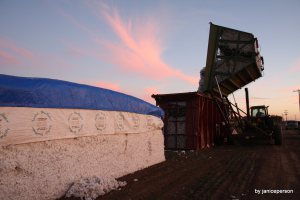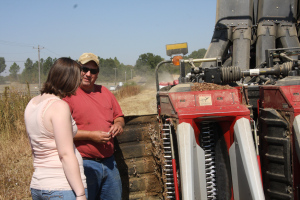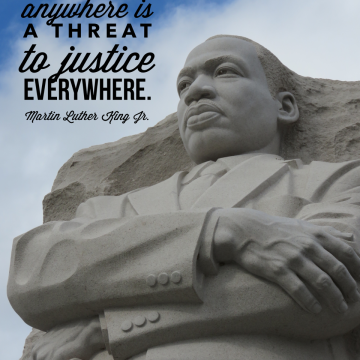 I’m in awe of the work some photographers do. I love travel photos, portraits, landscapes, etc…. and really love getting inspired by photographers. One who has struck me by images of rural landscapes is Canadian Sandra Parlow (photo site). She shoots dramatic skies, historic barns and wide open fields. I love doing the same things!
I’m in awe of the work some photographers do. I love travel photos, portraits, landscapes, etc…. and really love getting inspired by photographers. One who has struck me by images of rural landscapes is Canadian Sandra Parlow (photo site). She shoots dramatic skies, historic barns and wide open fields. I love doing the same things!
As we traded a few comments on social media (one of those sites that went away forever) about our crops (canola and cotton) — she had an incredible shot of canola in bloom, its one of the most amazing crops in season, but of course I prefer cotton at harvest! As we traded notes on the topic, I was able to tap into a lot of experience taking photos on the farm. As I thought a bit more, I decided to pull together a list of tips for farmers and a list for photographers may be helpful to get folks on the same page.
Tips for Photographers Going to the Farm
Before I start the list of tips for photographers, let me say that I have found many farmers are quite hospitable to me when I stop alongside the road to snap photos.
- If you can possibly make arrangements to be on-farm to take photos, do it. I’ve actually scouted locations one day and either stopped a pickup or two or made a few calls to see who’s it was just knowing when it got good light, I’d want to take lots of pics! This gives the farmer a bit of time to consider what may be going on in a field which is best for everyone.
- Remember incredible light may be the thing that’s top of mind for us, but for a farmer, getting the days work done may mean they fail to take time to appreciate the light as much as you.
- Private property should be respected whether it is marked or not. Please be sure you observe signs though as they can be there both for your safety & the safety of others. This is especially true with farms that have livestock as they frequently have some rules around health of the animals & people.
 You need to recognize there are a lot of things on farms that can create safety hazards. And farmers and farm workers have understandable concerns about liability. If a field has been irrigated, or treated for pests, there are some good reasons to keep people out of it. With equipment moving around, it can get hard to relax in the cab of a tractor if you can’t determine where someone has disappeared to.
You need to recognize there are a lot of things on farms that can create safety hazards. And farmers and farm workers have understandable concerns about liability. If a field has been irrigated, or treated for pests, there are some good reasons to keep people out of it. With equipment moving around, it can get hard to relax in the cab of a tractor if you can’t determine where someone has disappeared to.- Be sure you acknowledge the person doing the farming as soon as you are able to catch their eye — don’t try to do anything covert. Have a short chat about what you are doing, hand them your business card and ask if its okay. It you’ve shot at other farms in the area, mention other farmers you know. I frequently have asked for the farm’s email address or something so I provide them a few high res files as a lot of them don’t take time to get those photos during busy seasons.
- Sadly, even in the middle of nowhere, people have to question the motives of strangers. Reality is, some farmers have been burned by being accessible because not everyone is taken photos with the motive of sharing beautiful light on incredible landscapes. Building relationships with a few farmers can help you build the most hospitable network imaginable — at least it has for me!
- Please understand that the Amish communities and others may have cultural or religious reasons to shy away from photography. I haven’t spent much time in Amish areas, but thought this article did a good job explaining some of the basics.
- You may need to be understanding if a weather event shows up or a major piece of equipment breaks down as everything on a farm’s schedule changes when that happens.
Tips for a Farmer Dealing with a Photographer
More often, people are finding the views in rural parts of the US and other countries the sort of picturesque. Sandra mentioned getting a less than hospitable reaction from a farmer and I have to say that while I can totally understand there are reasons this would happen (read some of the tips I gave photographers), reality is we need more transparency if we want the general public to understand and appreciate agriculture. And while I’d like to think the reaction she received that one day was isolated, dealing with photographers isn’t necessarily a skill that all farmers have had to cultivate.
Anyway, to increase the understanding and help farmers cultivate the skills, I’m putting a few tips together. And because how the situations are brought to you may impact your approach in dealing with photographers, I’ll break these tips into two different sections — previously arranged or invited photographers and uninvited photographers.

Planned Photography Visits
- On planning calls or in emails, try to understand what the photographer is looking for — do they want to shoot photos of people, the farm, activities underway, crops, livestock, etc.
- Be sure the photographer gets a good feeling for what they should expect at the farm — if there are limitations to what you can do to help them capture their story, tell them about those limits before they arrive. Help them understand the why. (An example or two – to go in hog barns you need to go through a process to be sure livestock won’t be exposed to disease, etc certainly a one hour visit means visits to the barn are out of question. If they want planting photos after planting season is over, explain that and ask if photos of the planter with left over seed is sufficient.)
- Ask what mapping program will be used to navigate their way and help them understand a bit of the drive.
- If you have some flexibility to have a member of the family to be on point with your crew or something, its a good idea to make arrangements ahead of time because while photographers & videographers will try to limit the time you are involved, they will need a few options, some basic instructions on safety & geography if you won’t be going with them, etc.
- If they want to take photos of you, consider what you wear since it may be seen by more people than normal. Maybe wearing a nicer hat than the one you’ve been breaking in all year. Somehow, sweat marks are exaggerated in photos and frequently a member of your household will be less than pleased. 🙂 As far as clothing, no need to try and dress up but clothes with rips, major stains, product logos, & patterns can be tough on photos. (I have to mention I know one farmer who tends to wear the same color for most of the pictures taken of him — its the color that all the ladies have always told him he looks great in. His pictures are always popular LOL.)
- When you see someone with a camera aimed at your farm, stop what you are doing and see what’s going on. Make sure your employees also know how to handle it if they see a photographer at work — whether you decide they should call a manager or handle it directly, just make sure a plan is in place. The first interaction should be friendly — smiles are priceless and waving helps. Remember its more than likely the person is just interested in the scene they wandered upon, but its good to be cautious and ask questions too.
- Understand you should balance the rush to get your job done with the best interests of your farm. Its a good idea to know who’s taking photos of your farm, yourself, livestock, etc.
- A good first question is “can I help you?”
- Feel free to ask to see some identification. Most photographers have a business card that says whether they are working for a publication or have an independent business, etc. If its not clear to you what sort of photos they are taking and why, feel free to ask questions.
- If there is a good reason you don’t want them taking photos today — their safety is a primo one — take a few minutes to explain.
- Remember there is 98 percent of the US population that doesn’t have a farm connection. If you have a window to help connect someone and it seems like a worthwhile use of a few minutes to help make that connection. You can always suggest they come back another day when you have a bit more time.
- Go with your instincts. If something seems fishy, it may very well be. Feel free to make a couple of calls to check things out.



thanks for this post and introducing us to Sandra Parlow!
You are welcome Nate! I love finding great photographers!